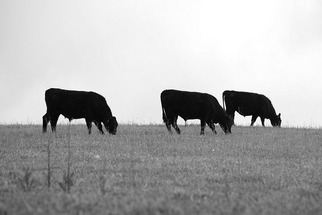|
For thousands of years soil fertility was maintained using a natural fertilizer widely available around the world.
This fertilizer is known as poop. That's right I said poop. I know that to the modern sensibilities the idea of using poop to grow food is probably a little uncomfortable. But when you compare it to the the other option we have been using it really doesn't seem that bad. Soil under modern agriculture has been reduced to a being a sponge that is there is absorb artificial fertilizers and pesticides instead of a living breathing structure. While chemicals can produce a amazing crop with great yields it has been shown that they suffer in flavor and nutrition. The growing trend of organic farming has brought about a new interest in maintaining soil fertility without the use of chemicals. This can be done with two different but very complimentary techniques.  Fertilizer Factories Fertilizer Factories
Manure
The first technique is the most obvious one and that is to spread manure onto your garden or fields. Manure is great because it is basically ready to go plant food that can easily incorporated into the soil and placed right at the roots of the plants. Manure can be delivered a couple of ways to where you need it. The common option used by many farmers is to load up manure and use a spreader to fling it all over the fields. While this method is effective it does require frequent trips and a big investment in time and money every year. A better option in my mind is to fence in areas that need fertilizing and then allow animals to graze the crop residue. This can work on the smaller backyard garden scale as well if you have chickens. By allowing them to feed in the garden after all the goodies have been removed they will not only fertilize the soil but will also clean up the garden for you. Cover Crops The use of cover crops have multiple benefits for someone trying to build a sustainable life. They aid in maintaining soil fertility by reaching down deep into the soil and pulling nutrients up into the soil close to the surface. The nutrients are then trapped in the cover crop vegetation and released when it starts to decay. The other benefit to cover crops is they can work as great feed for animals to graze on which promotes fertility through manure deposits. Between these two techniques you can indefinitely maintain a healthy, high fertility soil that will grow great food.
0 Comments
Leave a Reply. |
AuthorHello my name is Josh Larson and I am the creator of the Green Living Library. Here on the blog you will find updates to content found in the Green Living Library as well as stories from those living the sustainable life already. Archives
December 2021
Categories
All
|
